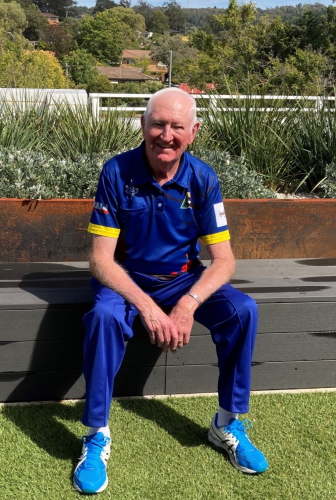My journey to participation in the SOLVE CRT Clinical Trial commenced in 2016 following a heart attack at home in Tura Beach in November.
Within days of this event, I was transferred by Ambulance from Bega Hospital to Canberra Hospital for an Angiogram procedure. The Angiogram detected three blockages, two of which had stents inserted on the same day, and another stent was inserted three weeks later.
I was referred by my GP to see the cardiologist in Canberra in June 2018. After having several tests including an Echocardiogram, he advised that he intended referring me to a colleague of his, who luckily for me was Dr Rajeev Pathak.
My first appointment with Dr. Pathak was a couple of months later, and I was diagnosed with Atrial Fibrillation. Subsequently, in September 2018 Dr. Pathak performed a surgery to implant a Defibrillator. I was given a home monitor that constantly checks my heart and if any irregularities are detected Dr. Pathak is notified immediately.
In 2019 Dr Pathak established his new private practice, Canberra Heart Rhythm, with his main focus on Cardiac Electrophysiology, specialising in treatment of patients with Arrhythmias. In the new clinic Dr Pathak joined a clinical trial (SOLVE CRT) conducted throughout the USA, Europe and Australia in testing a new wireless device (the WiSE CRT System) for use in treatment of such heart conditions. Given that my ejection fraction (EF) was down as low as 28%, Dr. Pathak advised that I would be considered as a candidate for the trial. Fortunately, as a result of several tests and experimentation with drugs, I was selected to participate in the trial.
This new device consisted of three components, a Battery, a Transmitter and a Receiver. In February 2020 Dr. Pathak successfully performed the first operation to implant the Battery and Transmitter. A few weeks later I was back to have the Receiver inserted into my heart, but after about three and a half hours, Dr. Pathak was unable to complete the procedure due to significant scarring around the point he was attempting to access my heart. The following day, on his rounds, Dr Pathak advised that he would make another attempt to access my heart from another entry point in about three weeks. Fortunately, due to the expertise of Dr. Pathak and his team the operation on 17 March 2020 was successful.
Twelve months on, I have now reached the end of the trial period. At my recent consultation with Dr Pathak on 16 February 2021, he advised that my EF is now about 46% and that my next appointment with him would be in twelve months’ time. What great news!
Throughout this incredible journey I cannot speak too highly of Dr. Pathak and his wonderful team at Canberra Heart Rhythm and at The Canberra Hospital, not to mention all others that have played a part in my recovery. The end result for me has been an increased capacity in activities such as walking and playing lawn bowls.

Paul Stewart